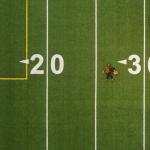Sony α6500 review: mirrorless camera with fast autofocus. Review of the premium Sony α6500 mirrorless system camera with APS-C sensor and in-camera stabilization Device and control
There is a new addition to the Sony Alpha family of mirrorless cameras with an E-mount mount - the α6500 camera has been announced, which is an improved version of the α6300 model, which was released in February of this year. Externally, compared to the α6300, the new product has practically not changed, most of the characteristics also remain the same. The most noticeable improvements are in the built-in stabilizer and camera controls.
The Sony α6500 is based on a 24.2-megapixel APS-C Exmor CMOS sensor with copper interconnects and 4D Focus hybrid autofocus, using 425 phase detection points and locking on the subject in 0.05 seconds. The BIONZ X processor and an auxiliary LSI chip are responsible for image processing, one of the tasks of which is to reduce the noise level by high values ISO. By the way, the sensitivity range of the matrix is ISO 100-51200.

The continuous shooting speed is 11 frames per second (or 8 frames per second with refocusing and exposure metering for each frame), and thanks to the use of a larger buffer, the camera can take over three hundred shots per burst. The manufacturer's guaranteed time between failures of the shutter mechanism is 200,000 operations. The minimum shutter speed is 1/4000 s.
One of the most important features Sony α6500 is a five-axis sensor shift stabilization system with an efficiency of up to 5 exposure levels. Another innovation is that the model’s display is now touch-sensitive, and with its help, in particular, you can select the focus point. Moreover, its diagonal is 3 inches, resolution is 921,600 pixels, and the rotating design allows you to tilt the screen up by 90° or down by 45°.

Other specifications of the Sony α6500 include support for 4K video recording using the XAVC S codec at up to 25 frames per second, Super 35 mode, OLED XGA Tru-Finder electronic viewfinder, S-Log3 and S-Log2 profiles, and the presence of built-in wireless transmission adapters Wi-Fi and NFC data.
Sales of the Sony α6500 will start in November, the retail price of the new product will be $1400.
09.10.2016 18002 Tests and reviews 4
There have been rumors for a long time about the appearance of a new flagship of the line of APS-C cameras with a Sony E mount, which will be a development of the Sony a6300 model, released in February. But at the loudest photo forum Photokina 2016, such a camera was not presented; apparently the company’s marketers decided to highlight the announcement from the general background of the exhibition and the Sony a6500 (ILCE-6500) was announced a few weeks after the closing of the events in Cologne. The new model inherits the hybrid focusing system from its predecessor, but the a6500 now allows you to select focus points by indicating on the touch screen or using the viewfinder for sighting. Another innovation is an image stabilization system that compensates for movement in five axes.
But let's not get ahead of ourselves when assessing the innovations of the Sony a6500, and compare its characteristics with the previous model and competitors on the market.
Comparison of Sony a6300 vs A6500 specifications
| Sony a6300 | Sony a6500 | |
|---|---|---|
| Image sensor | 23.5 × 15.6 mm (APS-C), Exmor CMOS | |
| Effective sensor resolution | 24.2 MP | 24.2 MP |
| Image Stabilizer | No | 5-axis in-camera stabilization |
| Bayonet | Sony E-mount | Sony E-mount |
| Photo format | RAW, JPEG (DCF Ver. 2.0, Exif Ver. 2.3) | |
| Video format | 4K, 100 Mbps, XAVC S, MP4, H.264, Linear PCM | |
| Frame size | Up to 6000 × 4000 | Up to 6000 × 4000 |
| Video resolution | Up to 3840×2160, 30p | Up to 3840×2160, 30p |
| Sensitivity | ISO 100-25600 (expandable to 51200) | |
| Gate | 1/4000—30 s | 1/4000—30 s |
| Burst speed/buffer | Up to 11 fps / up to 44 frames JPEG and 21 frames in RAW | Up to 11 fps / up to 307 frames JPEG and 107 frames RAW |
| Autofocus | Hybrid AF (425 phase detection points, 169 contrast points) | |
| Exposure metering, operating modes | 1200-zone evaluation: matrix, center-weighted, spot | |
| Exposure compensation | ±5.0 EV (1/3 EV or 1/2 EV increments) | |
| Built-in flash | Built-in, 1/160 sec sync, guide number 6 (ISO 100) | |
| Self-timer | 2, 10 s | 2, 10 s |
| Memory card | Memory Stick PRO Duo/Memory Stick PRO-HG Duo; SD/SDHC/SDXC up to UHS-I | |
| Display | Oblique, 3 inches, 921k dots resolution | Tilt, touch, 3 inches, resolution 921 thousand dots |
| Viewfinder | OLED, 2359 thousand dots | OLED, 2359 thousand dots |
| Interfaces | microUSB, miniHDMI, 3.5 mm microphone jack | microUSB, miniHDMI |
| Wireless modules | Wi-Fi, NFC | Wi-Fi, NFC |
| Power/Resource (CIPA) | Li-ion battery NP-FW50, 7.3 Wh (1020 mAh, 7.2 V) / 400 frames | Li-ion battery NP-FW50, 7.3 Wh (1020 mAh, 7.2 V) / 350 shots |
| Dimensions | 120 × 66.9 × 48.8 mm | 120 x 66.9 x 53 mm |
| Weight | 404 grams (with battery and memory card) | 453 grams (with battery and memory card) |
| Current price | $998.00 (without lens) | $1,399.00 (no lens) |
The table shows that the sensor remains the same. The sensitivity range, the number of phase sensors and other basic specifications have not changed. But, as we mentioned above, what stands out is the camera's built-in 5-axis image stabilization. It should enhance the ability to shoot in low light conditions with an efficiency that the manufacturer rates as five stops of exposure.

The Sony a6500 finally has a touch screen with a wide range of capabilities: one-touch shooting and setting an autofocus point, and when framing through the viewfinder, the screen works like a touchpad, allowing you to select the focus area with your finger without taking your eyes off the viewfinder. This feature is implemented for the first time in Sony cameras. Moreover, its diagonal is 3 inches, resolution is 921,600 pixels, and the rotating design allows you to tilt the screen up by 90° or down by 45°.


Another important improvement is the increased buffer for snapshots. It now allows continuous shooting of up to 307 frames in JPEG and 107 frames in RAW, whereas the A6300 was limited to 44 frames in JPEG and 21 in RAW. Continuous shooting speed is 11 frames per second (or 8 frames per second with refocusing and exposure metering for each frame). Speed and storage advantages achieved thanks to new technology LSI, which also improves the quality of photos and videos. The manufacturer's guaranteed time between failures of the shutter mechanism is 200,000 operations. The minimum shutter speed is 1/4000 s. Improved software interface.
What else has remained unchanged? The ability to record video in 4K with a bit rate of up to 100 Mbit/s is implemented in both cameras in the same way. We hope that the designers managed to solve the overheating problems of the a6300 in the new model. Both cameras use a high-quality OLED Tru-Finder viewfinder with a resolution of 2.36 million dots, S-Log3 and S-Log2 profiles and built-in Wi-Fi and NFC wireless data adapters. You can use SD, SDHC, SDXC or Memory Stick Pro Duo cards as removable media.

Externally, the Sony a6500 is almost no different from the a6300; it is still the same well-known NEX-6, gradually evolving and finally moving away from the NEX control scheme. Although some family features of the first Sony mirrorless cameras remain - in particular, a large selector dial on the top edge and a second ring on the rear panel combined with four navigation keys. The body is now made of magnesium alloy, the grip (not very good, in our opinion, located close to the lens) has not changed, the shape of the protrusion and the rubberized coating material do not raise any questions.

On the front panel there is a bayonet mount with a lens release button, an autofocus illuminator lamp, and an infrared port for the remote control remote control. On the left, under the hinged lid, miniHDMI, microUSB connectors and a 3.5 mm audio jack for a microphone are hidden. On the right is the NFC pad.

On the top edge you can see a universal multi-interface connector that can also work as a traditional “hot shoe”. There is also a flash, a mode selector and a navigation selector; closer to the front edge you can see a shutter button with a switch lever, as well as two programmable keys (the a6300 had one). On the bottom edge there is a combined compartment for the battery and memory card, as well as a tripod socket.

On the rear panel there is a tilting touch display, a viewfinder with a diopter adjustment wheel and a proximity sensor, buttons for activating the flash and calling up the menu, as well as a customizable lever. Below are elements already familiar to the a6300 - a function key that calls up the quick menu by default, a five-way key with a navigation ring, a button for playing back pictures, and another programmable button (in playback mode it is responsible for deleting pictures). The video recording start key is placed on the corner.

As for the price of the upgrade - the battery capacity is now enough to shoot 50 fewer frames, the camera has gained a little weight, has become larger by as much as 4 mm (can anyone notice this?) and... more expensive. The Sony a6500 will hit shelves at a price of $1,400, which is noticeably higher than the previous model.
conclusions
In terms of the totality of consumer characteristics, the previous model is noticeably inferior to the new a6500, and there will certainly be those willing to pay to boost the previous a6300 model with a larger buffer, 5-axis in-camera stabilization, faster sensor readout speed and reduced noise. And the touch screen will be a pleasant bonus and the final argument in favor of a new product when purchasing.
The Sony A6XXX series camera has been in production since 2014. During this time, three generations of the camera have already been released, the last of which was the Sony A6500. What changes has she undergone and does she deserve the title herself? best camera with an APS-C matrix, we’ll find out in this review.
Appearance
The Sony A6500 has a compact body that is entirely made of magnesium alloy and is additionally protected from moisture. You won’t be able to take pictures in water, but in rainy weather it’s easy. The camera weighs only 453 grams without lens.
There is a flash on top of the camera. A significant advantage is the fact that it can be pulled up, thereby scattering light across the ceiling, as is done with full-fledged external flashes.

At the bottom there is a thread for a tripod, as well as a combined compartment for the battery and SD card.

On the left, under the flap, there is a connector for micro-USB, micro-HDMI and 3.5 mm for an external microphone. Unfortunately, Sony decided not to implement a second 3.5mm headphone jack for sound testing. Apparently, this privilege was reserved only for cameras of the A7 and A9 series.

Control
The A6500 has traditional Sony camera controls. On top of the camera there is a mode switch, two of which can be completely customized. Also next to it there is a second switch, which by default is responsible for setting the aperture. Buttons C1 and C2 can also be customized to suit your needs.
The screen is touchscreen. It allows you to control focus while shooting. This seemingly insignificant function turns out to be incredibly convenient, both for artistic and reportage photography.

The display also has a rotating mechanism. This allows you to take great shots even from the most awkward angles. The only thing is that the display cannot be turned towards itself, so recording vlogs with this camera will not be very convenient.

Another plus that comes with the A6500 is its incredibly accurate autofocus. In all lighting conditions, most shots come out exactly in focus. This result was achieved thanks to 425 focusing points, which are distributed over the entire surface of the matrix.

An interesting feature is the ability to enable silent shooting in manual mode. This will allow you to take pictures of people in their natural state, because they will not suspect that you are photographing them.

PlayMemories Mobile app
There is an official PlayMemories Mobile application for mobile platforms iOS and Android, which has a whole range of capabilities. For example, through it you can control the camera, set settings and monitor what is happening in the frame. You can also quickly download the received images through the application. True, their Weight Limit will be about 800 KB, but for social networks will do.
Photo
On this moment, this is Sony's top-end camera with an APS-C matrix. It has a 24-megapixel sensor with an APS-C type Exmor CMOS matrix. Yes, everyone strives to shoot on FullFrame matrices, because they fit much more detail. But lenses on APS-C matrices are much cheaper. For example, a wide-angle lens from Sony E 10-18 mm F4 OSS costs 59,990 rubles in the official store, while a full-sensor lens FE 12-24mm F4 G with approximately the same focal length will cost 134,990 rubles. Obviously, the last lens will produce a higher-quality image than the first, but this difference is not so significant as to pay more than twice as much. The A6500 matrix is quite photosensitive, so the pictures do not begin to make noise even in the dark. We recommend taking photos in RAW format (ARW) rather than JPEG. Then you will be able to get the most out of your photo in post-processing.



5-axis stabilization allows you to take pictures with shutter speeds of up to 1-2 seconds without a tripod.

Video
Basically, Sony mirrorless cameras are bought for shooting video, because they have a large number of settings, accurate autofocus, and a wide working ISO value. It is because of this that many professional video makers choose Sony cameras.
The Sony A6500 is capable of shooting video in honest 4K resolution at 24 and 30 frames per second. With FullHD, you can shoot at 24, 30, 60 and 120 fps. In any shooting mode, you can turn on 5-axis stabilization, which will help get rid of shaky images. Here is an example video:
The autofocus capabilities are truly impressive. When shooting video, all objects are always in focus. During the testing process, the only drawback worth noting is the inconvenient button to start video recording. It is too small and you have to press it almost with your fingernail.

Battery
The P-FW50 lithium-ion battery, which is located in the camera, is easily enough for 300 frames. Regarding the video, you can squeeze out of it 110 minutes of recording in FullHD resolution. There are two ways out of this situation: buy additional batteries or use a Powerbank, because the camera can shoot and charge at the same time.Results
 The Sony A6500 showed itself to be a truly professional device. It produces a high-quality picture under any working conditions. Its advantages include accurate autofocus, a wide working ISO range, 5-axis stabilization, a touch screen and compactness. Among the shortcomings, we highlighted: short operating time on one battery, an inconvenient button to start video shooting, and the absence of a second headphone jack. We advise you to take a closer look at this camera even for the most experienced photographers. Sony A6500 receives the well-deserved "Gold" award...
The Sony A6500 showed itself to be a truly professional device. It produces a high-quality picture under any working conditions. Its advantages include accurate autofocus, a wide working ISO range, 5-axis stabilization, a touch screen and compactness. Among the shortcomings, we highlighted: short operating time on one battery, an inconvenient button to start video shooting, and the absence of a second headphone jack. We advise you to take a closer look at this camera even for the most experienced photographers. Sony A6500 receives the well-deserved "Gold" award... Advantages
Comfortable and durable body
Integrated Image Stabilizer
Excellent picture quality
Ultra HD video recording mode
Clear viewfinder and flip-out display
Fast autofocus
Fast and long continuous shooting
Flaws
Slow SD card slot
- Price-quality ratio
Fine - Place in the overall ranking
8 out of 70
- Price/quality ratio: 74
- Image quality (40%): 92.8
- Equipment and management (35%): 86.7
- Performance (10%): 90.8
- Video quality (15%): 90.2
100%
Editorial rating
100%
User rating
You have already rated
Sony Alpha 6500: test of a powerful DSLM camera with an APS-C format matrix
Not everyone will be happy about the appearance of the Sony Alpha 6500: only about six months have passed since the previous model was introduced to the market, and now the title of the manufacturer’s top DSLM model passes to its successor.
First of all, this may anger those buyers who just bought a device that suddenly ceased to be top-end.
But are there really serious reasons to reason in this way? In the end, the innovations here can be listed on the fingers of one hand, and they relate, first of all, to equipment and speed.
But the premium for the new Sony Alpha 6500, which is 20,000 rubles (the price of the camera without a lens is 120,000 rubles), attracts attention much more. Pointing out that for this amount you will get a new model of the 6000 series does not necessarily make the device significantly better. Consequently, some stakeholders may be wondering: Is it worth it, generally speaking? Absolutely right! But not for everyone.
Sony Alpha 6500: finally with stabilization
Undoubtedly, the main innovation is the presence of an image stabilizer. To put it in more detail: the integrated 5-axis stabilizer compensates for micro-shake of the camera even when used with lenses without the Optical SteadyShot system. In practice, this means being able to use 4.5 stops higher exposure when shooting handheld. During our test, the Alpha 6500 with a 50mm lens continued to produce sharp images even at a shutter speed of 1/20 second. Test photos in full resolution can be found in the photo gallery at the end of the material.
Sony Alpha 6500: suitable for camera operators
 Sony Alpha 6500: in addition to WLAN and TAC modules, there is Bluetooth on board for transmitting GPS data from a smartphone
Sony Alpha 6500: in addition to WLAN and TAC modules, there is Bluetooth on board for transmitting GPS data from a smartphone Videographers should also warmly welcome the appearance of image stabilizer. Finally, clear and detailed Ultra HD recordings at 30 frames per second will look "quiet."
This will also be facilitated by the ability to get rid of camera shake when the user presses buttons. The Sony Alpha 6500 is the manufacturer's first DSLM camera to feature a flip-out 3-inch high-resolution touchscreen display. This makes it much easier to achieve soft focus transitions during continuous video recording.
However, Sony still has some room for improvement here. Apart from the ability to switch between 399 focal points, the touch display does not have any other comfort functions. Viewing a photo gallery using swipes, enlarging photos, or even just navigating the menu using familiar gestures is not about the Alpha 6500. An update is required software! And it's a little surprising. After all, the Alpha 6500 is the second camera after the Alpha 99 II to which Sony has implanted a revised and visually better structured menu.
The coprocessor, christened with the name "LSI", first of all, increases the speed of work. On the one hand, its presence is evident in the short start-up time (1.1 s) and extremely fast autofocus with its maximum 0.3 s. On the other hand, it has a significant impact on burst shooting: while the fast pace with its approximately 11 frames per second is quite consistent with the 6000 series, the duration of the “burst” here is quite serious. Only after at least 240 JPEGs or a good 110 compressed RAWs will the Sony Alpha 6500 camera ask for a break. These characteristics are already quite close to those of a DSLR “sport machine gun”.
Sony Alpha 6500: Temperature-reducing SD card
 Sony Alpha 6500: Bluetooth, WLAN, high-resolution display - battery life with a maximum of 440 shots is correspondingly short
Sony Alpha 6500: Bluetooth, WLAN, high-resolution display - battery life with a maximum of 440 shots is correspondingly short Where Nikon's competitor is clearly superior to the Sony Alpha 6500 concerns, first of all, the capabilities of the built-in SD memory card slot. On the one hand, its location in the same compartment with the battery deserves criticism, on the other hand, the data transfer speed.
Anyone who uses the maximum possible burst length will be forced to wait more than a minute before the entire “queue” is saved on the card. However, there is a small consolation - the ability to view the footage before saving it to the gallery.
However: as in the case of the Alpha 99 II, the recording speed is incomparably slow with the overall high speed of the device. In short, the time has come for support for UHS-II cards, because despite meeting all standards, the Sony Alpha 6500 requires a UHS-I Class 3 SD card when recording 4K video at 100Mbps data transfer rates.
Sony Alpha 6500: First-class picture quality
 Sony Alpha 6500: At minimum ISO, the pop-up flash shoots approximately six meters
Sony Alpha 6500: At minimum ISO, the pop-up flash shoots approximately six meters Still, enough grumbling, as the Alpha 6500 is one of the best models the APS-C market currently has to offer. Much of the credit for this goes to the image quality. 24 megapixels at minimum ISO provide clear and mesmerizingly detailed “full-format” level images.
Structures high resolution, extremely sharp lines, low-noise surfaces: images look amazingly good. We measured the clarity of contours at a level of 1885 linear pairs per frame height, confirming this visual impression.
Also pleasing is the detail, which remains high up to ISO 3200 - it is even slightly better than the previous model. Of course, there are issues with the occasional slight blurring of the image, as a result of which the noise in the image becomes noticeable at 100% zoom, starting at ISO 3200. Still, overall it is very good result!
The equipment makes an equally convincing impression. It all starts with a high-quality, weather-resistant magnesium alloy body that, at 453 grams, is pleasantly light yet comfortable. WLAN, NFC and, for the first time, Bluetooth for receiving GPS data from a smartphone have found their place on board, as well as a jack for an external microphone and two wheels for adjusting aperture and shutter speed.
Particularly good is the electronic viewfinder with a high-resolution OLED panel and 0.7x magnification, which boasts not only a pleasantly large size, but also a surprisingly smooth image thanks to a refresh rate of 100 frames per second. The only negative is that the high performance of the viewfinder vigorously drains the battery. The battery can last from 230 to 480 shots, being in this regard - in contrast to the maximum 110 minutes of video recording - rather a weak average.
It can be better. And cheaper. Approximately 120,000 rubles (for a camera without a lens) is already serious. However, with the Alpha 6500, buyers will get a best-in-class DSLM camera. However, those who can refuse the touch display and image stabilization system can choose a much cheaper, also first-class model.
 F5.6, 1/15c, ISO 100; Sony FE 35 mm F2.8;
F5.6, 1/15c, ISO 100; Sony FE 35 mm F2.8;  F5.6, 1/250s, ISO 1600; Sony FE 35mm F2.8
F5.6, 1/250s, ISO 1600; Sony FE 35mm F2.8 
 F8, 1/40c, ISO 400; Sony SEL DT 50mm F1.8
F8, 1/40c, ISO 400; Sony SEL DT 50mm F1.8  F8, 1/160s, ISO 1600; Sony SEL DT 50mm F1.8
F8, 1/160s, ISO 1600; Sony SEL DT 50mm F1.8  F8, 1/2.500c, ISO 25600; Sony SEL DT 50mm F1.8
F8, 1/2.500c, ISO 25600; Sony SEL DT 50mm F1.8  F1.8, 1/640c, ISO 100; Sony SEL DT 50mm F1.8
F1.8, 1/640c, ISO 100; Sony SEL DT 50mm F1.8  F2, 1/30c, ISO 400; Sony SEL DT 50 mm F1.8;
F2, 1/30c, ISO 400; Sony SEL DT 50 mm F1.8;  F1.8, 1/800s, ISO 100; Sony SEL DT 50mm F1.8
F1.8, 1/800s, ISO 100; Sony SEL DT 50mm F1.8 Sony Alpha 6500: alternative
For those who are looking for a camera based primarily on their budget, we recommend paying attention to the leader in price-quality ratio in the DSLM and DSLR camera categories. Right here we will show you the leaders for this characteristic. All DSLM and DSLR cameras we have tested, sorted by price-quality ratio, will show.

1.
Image quality (40%)
: 88.1
Video quality (15%)
: 98.3
Equipment and management (35%)
: 82.3
: 15.8 megapixels
Sensor dimensions
: 17.3 x 13 mm
Overall rating: 87.9
Price/quality ratio: 100

2.
Image quality (40%)
: 84.1
Video quality (15%)
: 92.5
Equipment and management (35%)
: 83.3
Effective number of pixels
: 15.8 megapixels
Sensor dimensions
: 17.3 x 13 mm
Overall rating: 85.2
Price/quality ratio: 95

3.
Image quality (40%)
: 89.8
Video quality (15%)
: 74.5
Equipment and management (35%)
: 70.8
Effective number of pixels
: 24.0 megapixels
Sensor dimensions
: 23.5 x 15.6 mm
Overall rating: 80.1
Price/quality ratio: 89
| TEST RESULTS | |
|
Image quality (40%) |
|
|
Equipment and management (35%) |
|
|
Performance (10%) |
|
|
Video quality (15%) |
|
| CONCLUSION During testing, the Sony Alpha 6500 (a6500) took second place in our corresponding rating. With top-notch image quality and numerous features including a touchscreen display, as well as agile autofocus and fast continuous shooting, the Sony Alpha 6500 (a6500) is compelling in almost every way. But the data transfer speed of the SD memory card slot cannot compare with the high speed of the camera. |
90.1% OVERALL RESULT |
Sony Alpha 6500 test results
Characteristics and test results of Sony Alpha 6500
| Price-quality ratio | 74 |
| Camera type | D.S.L.M. |
| Effective number of pixels | 24.0 megapixels |
| Maximum photo resolution | 6000 x 4000 pixels |
| Sensor type | CMOS |
| Sensor dimensions | 23.5 x 15.6 mm |
| Cleaning the sensor | Yes |
| Built-in stabilizer (in camera) | Yes |
| Video recording | Yes |
| Lens mount | Sony E |
| Lens when assessing image quality | Sony SEL 1.8/50 |
| Lens when evaluating performance | Sony FE 3.5-5.6/28-70 OSS |
| Minimum shutter time | 1/4.000 s |
| Maximum shutter time | 30 s |
| Viewfinder | electronic |
| Viewfinder coating | 100 % |
| Viewfinder magnification | 0.70x |
| Display: diagonal | 3.0 inches |
| Display: resolution | 921.600 subpixels |
| Display: touchscreen | Yes |
| Display: start video recording from the touchscreen | Yes |
| Display: rotatable | turning |
| Display: Selfie mode | - |
| Second display | - |
| Orientation sensor | Yes |
| GPS | - |
| Minimum ISO | ISO 100 |
| Maximum ISO | ISO 51.200 |
| Min. flash sync time | 1/160 s |
| White balance (number of presets) | 3 Presets |
| White balance: Kelvin | Yes |
| Resolution at ISO min | 1,848 line pairs |
| Resolution at ISO 400 | 1,832 line pairs |
| Resolution at ISO 800 | 1,741 line pairs |
| Resolution at ISO 1600 | 1,727 line pairs |
| Resolution at ISO 3200 | 1,727 line pairs |
| Resolution at ISO 6400 | 1,692 line pairs |
| Detail at ISO min | 93,8 % |
| Detail at ISO 400 | 93,9 % |
| Detail at ISO 800 | 93,9 % |
| Detail at ISO 1600 | 93,8 % |
| Detail at ISO 3200 | 88,4 % |
| Detail at ISO 6400 | 80,7 % |
| Visual noise at ISO min | 1.04 VN (1.1 VN1, 0.5 VN3) |
| Visual noise at ISO 400 | 1.15 VN (1.2 VN1, 0.7 VN3) |
| Visual noise at ISO 800 | 1.14 VN (1.2 VN1, 0.6 VN3) |
| Visual noise at ISO 1600 | 1.43 VN (1.5 VN1, 0.8 VN3) |
| Visual noise at ISO 3200 | 2.09 VN (2.2 VN1, 1.1 VN3) |
| Visual noise at ISO 6400 | 2.19 VN (2.3 VN1, 1.2 VN3) |
| Expert assessment: noise and detail at ISO min | Very good |
| Expert Review: Noise and Detail at ISO 1600 | Very good |
| Expert Review: Noise and Detail at ISO 3200 | Fine |
| Expert Review: Noise and Detail at ISO 6400 | satisfactorily |
| Ready time for shooting from off state | 1.1 s |
| Shutter lag time for manual focusing | 0.04 s |
| Shutter lag time with autofocus in daylight | - |
| Shutter lag time with autofocus in low light | - |
| Shutter lag time in Live-View mode with autofocus in daylight | 0.30 s |
| Continuous shooting speed in RAW | 11.1 photos/sec |
| Burst length in RAW | - |
| Continuous shooting speed in JPEG | 11.1 photos/sec |
| Series length in JPEG | - |
| Battery | NP-FW50 |
| Battery cost | 50 |
| Battery: max. flash photography | 230 photos |
| Battery: max. photos without flash | 440 photos |
| Battery: max. photos in Live-View with flash | 480 photos |
| Battery: max. photos in Live-View without flash | 250 photos |
| Battery: Video recording duration | 1:49 h:min |
| Microphone jack | yes, 3.5 mm |
| Built-in flash | Yes |
| Flash control | Yes |
| Remote shutter release | Yes |
| Memory card type | SDXC |
| WLAN | Yes |
| NFC | Yes |
| Housing material | magnesium alloy |
| Housing: dust and splash resistant | Yes |
| Dimensions | 120 x 67 x 53 mm |
| Weight without lens | 453 g |





